Managing attic condensation can pose a considerable challenge for numerous homeowners. The presence of superfluous humidity and water specks on your attic’s interior and roof may induce several issues like structural impairment. Nonetheless, comprehending the formation of condensation and ways to inhibit it can avert your attic from transforming into a humid, unhygienic, and expensive calamity.
Understanding the Science Behind Condensation
Understanding condensation is akin to uncovering the secret behind a magic trick – once you’re in on it, everything becomes incredibly straightforward. So, let’s demystify condensation. Picture a cold winter’s day, with your home serving as a warm sanctuary against the icy outdoor elements. The humid air in your home rises, ultimately ending up in your attic. Upon contact with cold surfaces there, such as an icy roof, the air temperature falls rapidly. This causes the air to shed its moisture, resulting in droplets on these cold areas – a process known as condensation.
Now, condensation in the attic occurs when warm, humid air freezes in exceptionally cold temperatures. The longer the cold snap, the more moisture has a chance to accumulate. However, because temperatures in the attic might fluctuate owing to weather changes, the accumulated frost may thaw and freeze again. This causes a freeze-thaw cycle, which is an obvious hazard for your attic and home. As a result, homeowners may start to notice minor to severe water stains. This is known as “attic rain”, which is a relatively new term in the industry. Such a scenario can be addressed with proper ventilation, ensuring that the attic space temperature is the same as the outside temperatures.
Yet, this science ‘magic trick’ has a second chapter, evident during the warmer months. Visualize a hot summer day. The sweltering outdoor air finds its way into your relatively cooler attic. Here, upon encountering the chillier surfaces, it cools, creating those familiar water droplets.
Though captivating, this scientific phenomenon can have damaging implications for your home and attic. Hence, understanding the science that drives it is crucial for maintaining a dry attic and averting expensive damages. Moving forward, we will explore the potential harm unattended attic condensation can inflict. Are you prepared to deepen your understanding and develop the expertise required to combat the nuisance of attic condensation? Let’s press on!
The Consequences of Ignoring Attic Condensation
Disregard attic condensation, and you might pay the price. If not addressed, this seemingly innocuous dew-like occurrence could escalate into a significant, costly problem. How, you may wonder?
Visualize the wooden components of your attic – the rafters, joists, and sheathing. Now, imagine them persistently exposed to condensation. Eventually, the wood begins to deteriorate and deform, akin to a neglected, weather-beaten boat. This deterioration can jeopardize the structural stability of your house, effectively jeopardizing your home’s primary shield.
But the woes don’t stop here. The scenario gets bleaker with the unwelcome appearance of mold and mildew. These fungal trespassers flourish in humid conditions provided by your attic. They can inflict additional damage to your property and pose a threat to your family’s health. Those suffering from respiratory ailments may experience exacerbated symptoms due to an increase in allergens.
But the problems don’t end there; attic condensation can significantly damage your finances. Hard to believe? Well, moisture-laden insulation loses its effectiveness, leading your HVAC system to exert more effort. The aftermath? An inflated energy bill at the end of the month.
Hence, overlooking attic condensation is not just about managing a damp, musty attic. It is about safeguarding your home, health, and finances.
How to Identify Attic Condensation
Detecting attic condensation doesn’t have to be complex. An obvious hint could be visible water droplets or frost on attic surfaces. Frost is noticed first on the nail heads that come through the roof decking. As condensation prefers colder environments, such sightings could be signs of an underlying moisture issue. Yet, what happens if these signals aren’t visible? Fortunately, there are other ways to identify this hidden issue.
Humidity in your attic might leave minor indications throughout your home. Have you observed paint peeling off your walls or ceilings? Does a distinctive damp scent persist within your living areas? These could suggest concealed attic condensation. Another indication is water, ice, or syrup-coloured water pouring through the soffits or running down the outer wall of the house.
Your attic’s insulation may also reveal significant hints. Damp insulation, or that with a musty smell, implies excessive moisture in the attic. Stay vigilant for rust on metal structures or dark discoloration on the attic wood; they could signify ongoing moisture troubles in your attic.
On colder days, a simple tactile test could also be revealing. If your attic’s interior roof feels damp or particularly cold, it’s likely that condensation is occurring.
Intriguingly, listening to your home could also help. Unusual and random sounds may point to a condensation problem. With fluctuating temperatures, condensation may cause materials in your attic to expand and contract, leading to a sequence of creaks, cracks, and pops.
Remember, condensation is elusive. It may not manifest itself with any significant signs, prompting you to be more proactive in hunting down these indicators. Understanding these signs is crucial to defending your home against moisture damage. Having recognized the problem, what is your next move? Continue reading as we unpack the steps to prevent condensation from causing disruptions in your attic.
How to Stop Condensation in Your Attic
The age-old adage, “Prevention is superior to cure,” is apt when it comes to warding off attic condensation. But what is the strategy to prevent this unwelcome interloper from entering your attic? Here are some successful tactics to combat moisture.
Firstly, let’s discuss ventilation. An efficiently ventilated attic facilitates smooth air circulation, thus preserving a balanced temperature and moisture level. This balance prevents the frigid surfaces in your attic from becoming a magnet for humidity. If your attic falls short in the ventilation department, think about installing vents or fans. Ventilation openings close to the roof peak enable the hot air to evacuate, while the ones near the soffit pull in cooler air, advocating for persistent air movement.
Insulation comes in as the subsequent defensive strategy. The right insulation prevents warm air from fleeing from your dwelling into the attic. Pay meticulous attention to the attic floor and the spaces nestled between the joists when insulating. This shield can deter warm, humid air from coming into contact with the frigid attic surfaces, thereby minimizing condensation risks.
Furthermore, ponder over fitting a vapor barrier. This defensive layer, typically fashioned from plastic or foil sheeting, is placed on the insulation’s warm side. A vapor barrier’s role is to deter damp air from intruding into your attic from the living spaces beneath.
Another course of action to mull over is managing indoor humidity. Simple practices like utilizing exhaust fans while cooking or bathing can drastically cut down the dampness levels in your residence. A dehumidifier could be a worthy investment for areas that have a high humidity level.
Lastly, regular monitoring and inspection play a pivotal part in curbing attic condensation. Stay vigilant for potential leaks in your roof or walls. Even the smallest leak can add to the dampness overload, instigating condensation. Periodically examine your attic insulation and ventilation systems to ascertain their functionality.
Contact Alfa Roofing Today
Are you ready to evict attic condensation from your home? Fear not! Alfa Roofing is here to help. Our team of seasoned professionals is well-equipped to address your condensation concerns, safeguarding both your house and your well-being. Choosing us means you can rest easy, confident in the knowledge that your attic is no longer a playground for damaging moisture but a dry, secure, and functional space. Say goodbye to the moisture menace. Get in touch with us today for a personalized consultation.

